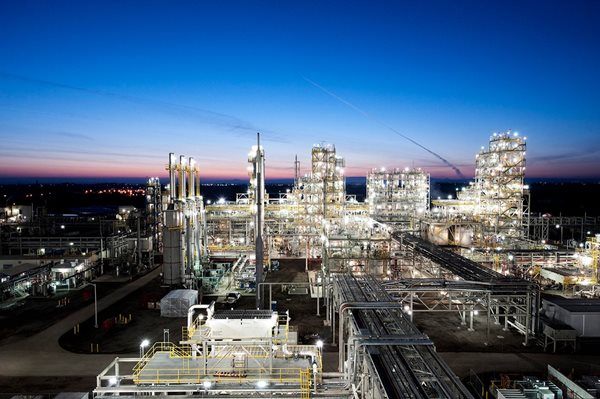As unpopular as the Section 201 tariffs are in most of the U.S. solar industry, in the wake of these tariffs and last fall’s tax reform, no less than four new module factories are being built in the United States, bringing gigawatts of new manufacturing capacity. But in the final tally of the trade war, there may be productions facilities lost to add to the interruption of the U.S. downstream market in the list of damages.
Last Friday, five members of the state of Washington’s delegation to the U.S. Congress and all three members of Montana’s delegation sent a letter to President Trump, warning that REC Silicon will be forced to shutter its polysilicon production facility in Moses Lake, Washington, laying off 150-200 workers. This delegation is Senator Maria Cantwell (D), the ranking member of the U.S. Senate Committee on Energy and Natural Resources.
There was no mention of REC Silicon’s second facility in Montana, but the presence of the members of congress from Montana suggests that they too are highly concerned about the fate of the company.
pv magazine had not been able to confirm any news about a closure with REC Silicon by the time this article was published. But if the plant does close, it will be a long time coming. China imposed retaliatory tariffs in 2014. This shut off the world’s largest market for U.S.-made polysilicon, all the more so as Chinese ingot, wafer and cell makers were still able to secure high-quality Western polysilicon through a minimum price deal that Wacker Chemie negotiated with the Chinese government.
REC Silicon was not the only U.S. polysilicon maker to be hurt by this, as Hemlock Semiconductor has also been devastated. And as time goes on, REC is still laying off workers, reporting in July that it would lay off 100 workers, or 40% of the workforce at the Moses Lake facility, which uses the fluidized bed reactor process to make polysilicon.
There is an irony here in that while Trump has accelerated the trade war with China through multiple retaliatory trade actions, that the situation with polysilicon is one that his administration inherited. This was referenced in the letter, which asks the Trump Administration to “move past the unsuccessful actions of the past administration and find an immediate resolution to the trade dispute over Chinese solar panels and American polysilicon”.
Specifically, the members of congress note that the Trump Administration is about to engage China in a new round of trade talks. But this may not end as the members of congress have planned. As explored in an article in the print edition of pv magazine, in Robert Lighthizer President Trump has found a U.S. Trade Representative whose policies herald a return to the economic nationalism and “managed trade” of the Reagan years, and given the bellicose foreign and trade policy of the Trump Administration there are unlikely to be many compromises.
This content is protected by copyright and may not be reused. If you want to cooperate with us and would like to reuse some of our content, please contact: editors@pv-magazine.com.



1 comment
By submitting this form you agree to pv magazine using your data for the purposes of publishing your comment.
Your personal data will only be disclosed or otherwise transmitted to third parties for the purposes of spam filtering or if this is necessary for technical maintenance of the website. Any other transfer to third parties will not take place unless this is justified on the basis of applicable data protection regulations or if pv magazine is legally obliged to do so.
You may revoke this consent at any time with effect for the future, in which case your personal data will be deleted immediately. Otherwise, your data will be deleted if pv magazine has processed your request or the purpose of data storage is fulfilled.
Further information on data privacy can be found in our Data Protection Policy.